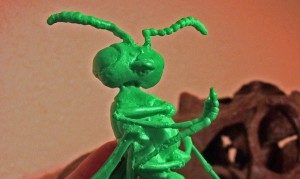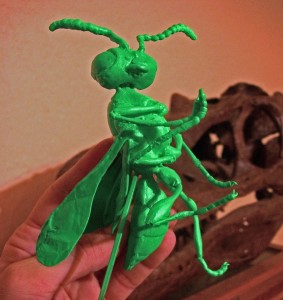Like a scene form a Jurassic Park (1993) film, paleontologist Robert DePalma examines an insect locked-in amber from the Cretaceous period of hundreds of millions of years ago. DePalma is the curator at The Palm Beach Museum of Natural History. The Palm Beach Museum is a scientific research institution that is focused on both expeditions & new discoveries as well as community outreach.
The amber and the insects it contains is from the Hell Creek Formation which includes portions of Montana, Wyoming and the Dakotas.
The insects are but the size of a sesame seed, but by utilizing digital 3D scanners and 3D printing DePalma was able to bring them back to life.
“This guy is a new species…” DePalma beams “…that parasitized other insects and there was previously not a single clue that it ever existed.”
This new species may even be a part of a completely new genus. DePalma continues .
“With a reproductive strategy that would make Sigourney Weaver’s heart skip a beat, this fiendish insect likely reproduced in the fashion as other parasitic wasps, piercing through th exoskeleton of the host insect, depositing eggs, and the larvae would later burst through the poor host and exit in an event not too dissimilar from the dining room scene in the fist Alien (1979) movie.”
The Palm Beach Museum of Natural History is a traveling museum that had garnered recognition from the international press with its discoveries related to the Tyrannosaurus Rex and other dinosaurs.
With an infections enthusiasm DePalma proudly boasts like a kid who just received the best Christmas present ever:
“We have discovered new species of dinosaurs that have not even been named yet.”
Look for the many traveling exhibits from this museum in the South Florida area and new discoverers from its ever adventurous and continually exploring paleo-crew.



















